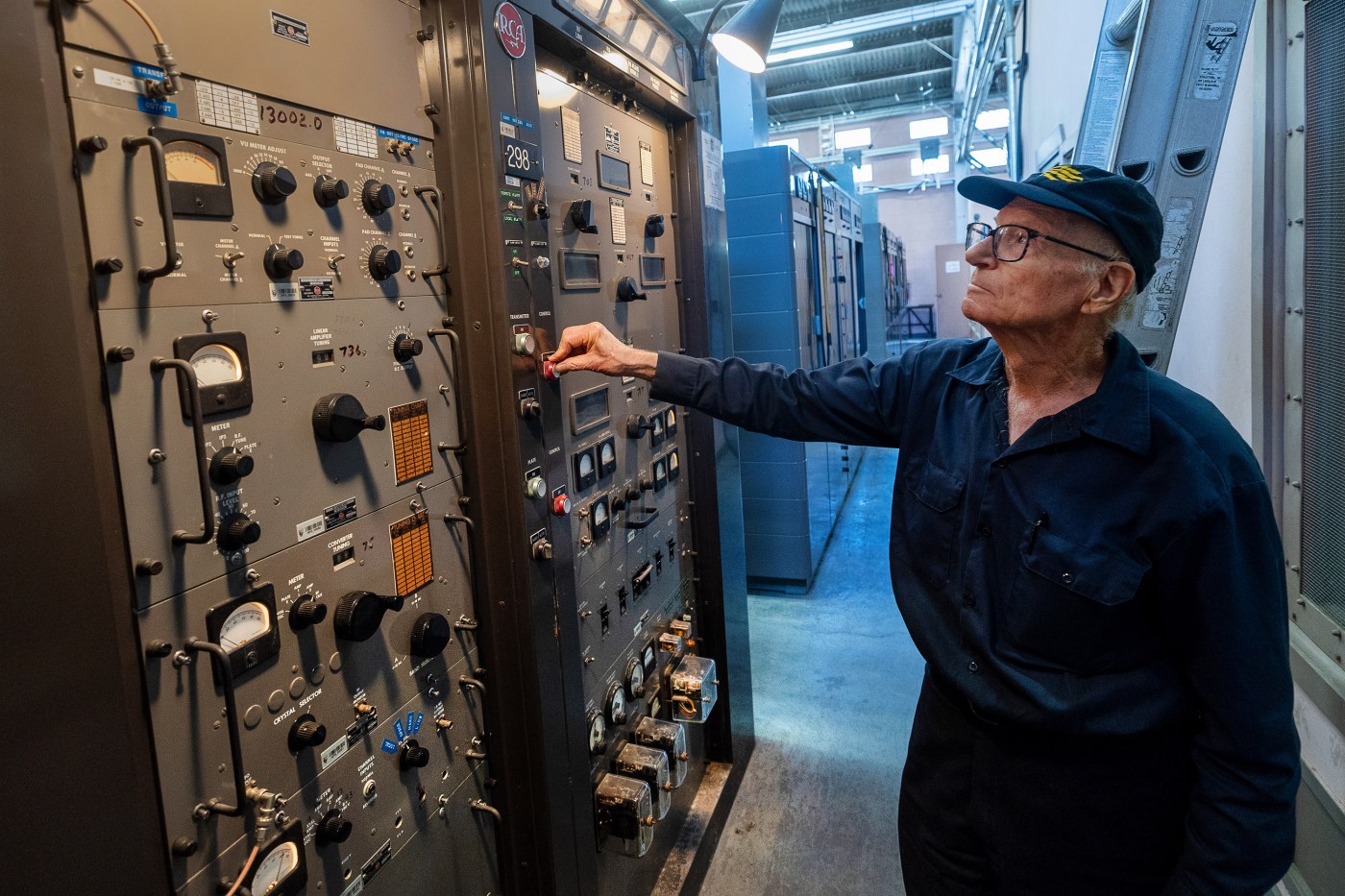On July 12, 1999, the nation’s final message in Morse code was sent out to sea from a remote Bay Area radio station. The end of an era, the room’s mood was mournful. Grizzled old men wept.
“We wish you fair winds and following seas,” it said, offering a seafarers’ traditional farewell in a staccato stream of dots and dashes. And then the station went silent.
But every July 12, the golden age of maritime radio comes back to life.
Hikers walk the long Cyprss tree tunnel to the Historic KPH Maritime Radio Receiving Station in Point Reyes National Seashore, Thursday, July 11, 2024, where the nation’s last Morse code message was sent 25 years ago. (Karl Mondon/ Bay Area News Group)
Volunteers at the last surviving Morse code radio station — KPH, established in Point Reyes and Bolinas in 1913 by the American Marconi Co. and run by the Maritime Radio Historical Society — will exchange messages with Morse code enthusiasts around the world, including memorials and a salute to now-silent coast stations.
Friday’s “Night of Nights” event, which commemorates the long-gone stations and the skilled radiotelegraph operators who linked ships to shore, starts at 5:01 p.m. – precisely one minute after the 1999 message ended. Operators will keep working until 11 p.m.
“We’re carrying on,” said historical society president Richard Dillman, 80, who learned Morse code as a boy. “Morse code is not dead.”
Richard Dillman shows off the Historic KPH Maritime Radio Receiving Station in Point Reyes National Seashore, Thursday, July 11, 2024 It is the last standing Morse code station. (Karl Mondon/ Bay Area News Group)
The event, based at KPH’s stations that are now part of the wild and windswept Point Reyes National Seashore, northwest of San Francisco, is not open to the public.
But amateur radio operators around the world can participate by sending messages and exchanging greetings on frequencies in all the commercial maritime bands. The operating frequencies of the historical society’s amateur station, under the call sign K6KPH, are 3550, 7050, 14050, 18097.5 and 21050.
Radiogrammed messages arrive from as far away as New Zealand and Europe, rich with memories of rewarding careers or poignant tributes to lost loved ones. “Dear dad, we love you and we miss you so much,” said one.
The station uses the original historic KPH transmitters, receivers, antennas and other equipment, carefully repaired and restored by the society’s experts.
Before Morse code, ships had no way to communicate with each other, or tell ports that they were on their way. They couldn’t announce they were in trouble.
First devised in the 1830s by Samuel F.B. Morse for use with the telegraph, the code became an essential part of civilian, maritime and military radio communications.
It’s a simple yet powerful system. It uses two symbols: the dot, or “dits” (.) and the dash, or “dah” (-). The dot is a quick sound, while the dash is three times longer. By combining dots and dashes, it’s possible to form letters, numbers, and other characters.
Listening for a message, “you have earphones on, and there’s static, interference and all this other stuff going on,” said Dillman, who came from New York to California during the ’60s “Summer of Love” to pursue broadcast engineering and had a 30-year career as a radio operator for vessels of the environmental group Greenpeace.
“But in the midst of that, you hear a signal from the ship. It’s like they’re speaking to you,” he said. To send a message, using thumbs and forefingers, operators type a stream of “dits” and “dahs” with the ease of a virtuoso. Each operator has their own cadence and style.
The original paper tape of Morse’s first message — “What hath God wrought,” borrowed from the Bible — is still on display at the Library of Congress.
Morse code transmitted the final distress signal of the Titanic on April 14, 1912, as the ship slipped beneath the waves. “Come at once,” tapped the Titanic’s radio engineers. “We have struck a ‘berg.”
But Morse code’s signal has faded. With no practical relevance in an age of high-speed and efficient digital communications, the U.S. military and Coast Guard has abandoned its use. (Remarkably, it is still used by the Russian military in the Ukraine war.)
All over the Pacific coast, stations closed. KPH’s receiving headquarters — an Art Deco cube built between 1929 and 1931, its entrance framed by a tunnel of cypress trees — was acquired by the National Park Service in 1999. Its transmission station is located on a windswept bluff in Bolinas.
Richard Dillman enters the Historic KPH Maritime Radio Receiving Station in Point Reyes National Seashore, Thursday, July 11, 2024, the nation’s last standing Morse code station. (Karl Mondon/ Bay Area News Group)
Dillman and friend Tom Horsfall resolved to repair, restore and operate KPH as a way to honor the men and women who for 100 years had served ships in the North Pacific and Indian Ocean.
“It was a brotherhood,” said Dillman. “There was camaraderie — a love of Morse code and the ability to do a job well.”
They were amazed to discover that the sites hadn’t been vandalized.
The receiving station was a near-pristine time capsule. Receivers were still crackling. Coffee cups were left on tables. Cluttered with electronic equipment, it held relics such as a Teletype machine, manual typewriters and telegraphy “keys.” On a carousel were messages for ships that would never again call.
Time and weather had taken a far worse toll on the transmission station in Bolinas, with broken windows and forgotten garbage.
Messages from the facilities final days of use as a Morse code station remain on a rack at the Historic KPH Maritime Radio Receiving Station in Point Reyes National Seashore, Thursday, July 11, 2024. (Karl Mondon/ Bay Area News Group)
With a dozen society volunteers from all over the Bay Area — all over the age of 60, self-described “radio squirrels” — they went to work. They meet on Saturday mornings over coffee and breakfast “services” dubbed “The Church of the Continuous Wave,” sometimes ogling over radio schematics. Then, for a few hours, they broadcast news and weather.
KPH requires ongoing work to keep the ancient electronics alive, said Steve Hawes, 84, of Berkeley. “When we first started, we fixed the transmitters up fine. It seemed great. But then, year by year, things happen. Antennas fall down. Things rot and rust.”
“Point Reyes National Seashore is grateful for the valuable volunteer work,” said Rich Moorer, interpretive program manager at Point Reyes National Seashore.
“Their contributions to this storied profession,” he said, “keep the legacy of radio communications alive for new generations to experience.”
To learn more about the “Night of Nights’ and the Maritime Radio Historical Society, go to: https://www.radiomarine.org/












